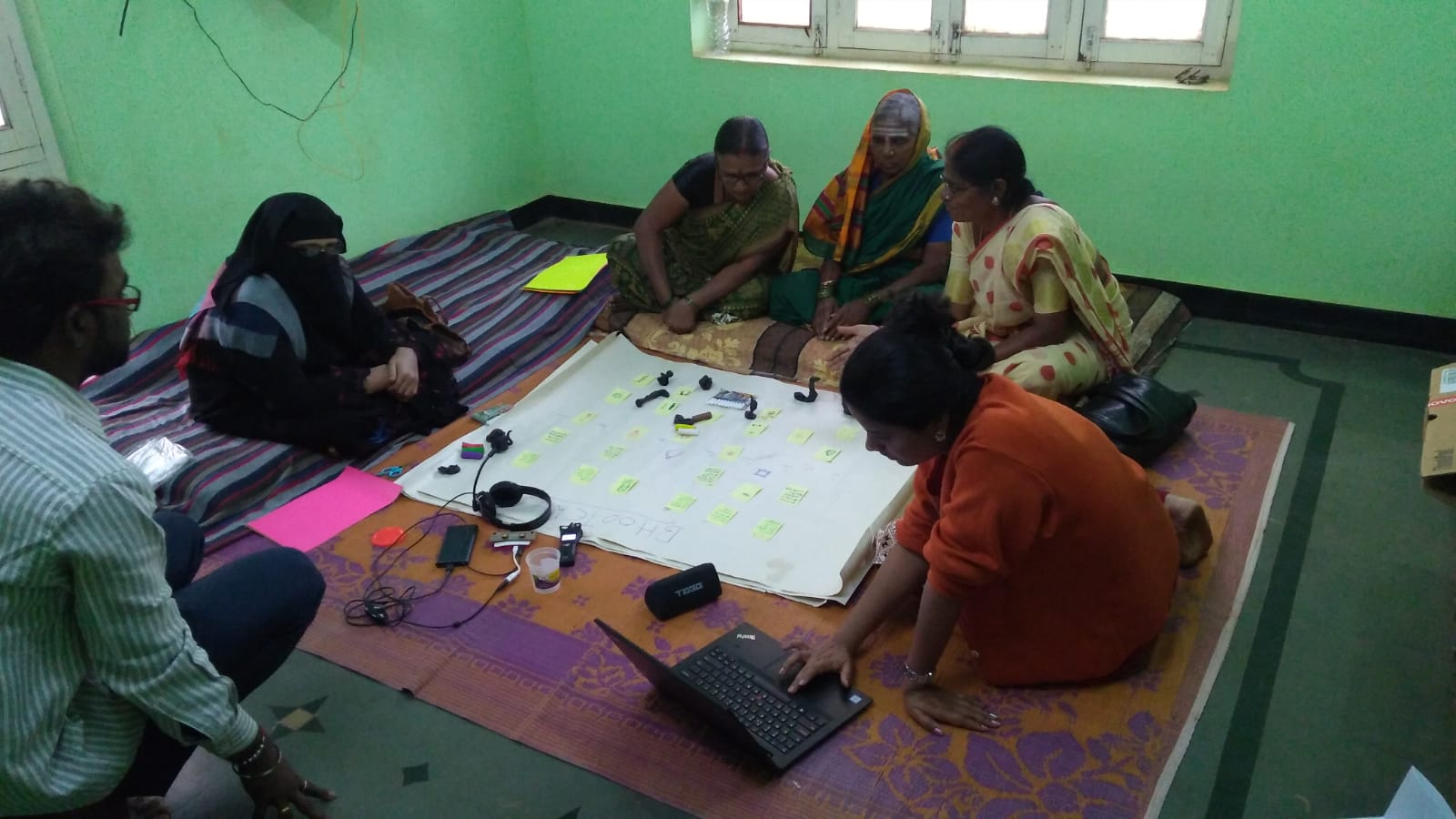Care-full Collectives and their Care Practices

My thesis explores the intricate relationship between care, collaboration, and networks within various collectives, delving into my experiences in Team YUVAA, Living Labs Network and Forum, Design Beku, and the InterCity Covid Apps Network. Through thick descriptions and reflective analysis, it observes diverse care-giving roles and proposes alternative organizational structures rooted in mutual aid principles.
Preface
The preface sets the context for the thesis, discussing our understanding of systemic issues, the importance of future studies, and care as an alternative epistemology. It also acknowledges the author’s privilege and how it shapes the research.
Introduction
The introduction explores the intersections of care, collaboration, and networks. It defines care, networks, and collaboration and provides examples from the author’s experiences in different networks/collectives, including Team YUVAA, Living Labs Network and Forum, Design Beku, and the InterCity Covid Apps Network.
Literature Review
The literature review discusses the selection of topics around ethics of care, networks, and collaboration. It highlights the importance of non-western voices and explores different theories of care and collaborative work. It discusses the work of bruno latour, annemarie mol, ella myers, jenna grant and other care-based researchers
Methodology
The methodology section outlines the approach taken in the research. It discusses the use of feminist principles of research, enmeshing into networks, and participating in various roles within those networks. It is set in the context of Corona response work and the other collective-based activities. It uses grounded theory, feminist geography and participatory autoethnography to understand the author’s experience in these collecives.
Makings, Doings and Seeings
This section delves into the author’s experiences and reflections while working in different networks. It does this through a series of episodic thick descriptions that observe on-field understandings, modes of production or a modes of acting that the author was part of and juxtaposes it with care literature. It includes discussions on specific networks like Team YUVAA, Living Labs Network and Forum, Design Beku, and the InterCity Covid Apps Network. It also introduces archetypes of care-giving roles that i saw people of the collective don, such as maintainers, translator-weavers-facilitators, and storyteller-archiver-guides. The section further expands on the methodology of the research, discussing different micro-outputs and their reflective value in. It covers topics like meeting with Kumbhara Potters, contextualizing tech, exhibitions, workshops, translations, app development, and various tools used in the process. A section delves deeper into the archetypes or skins identified within the networks. It discusses maintainers-repairers, translator-weavers-facilitators, and storyteller-archiver-guides, providing insights into their roles and contributions.
Conclusion
The conclusion summarizes the findings and insights from the research. It reflects on the understanding of care in different networks and proposes alternative organizational structures and rituals based on the research. It introduces the concepts of archetypes and axioms as tools for understanding care roles in collectives and alternatives for organizing institutions for mutual aid.
